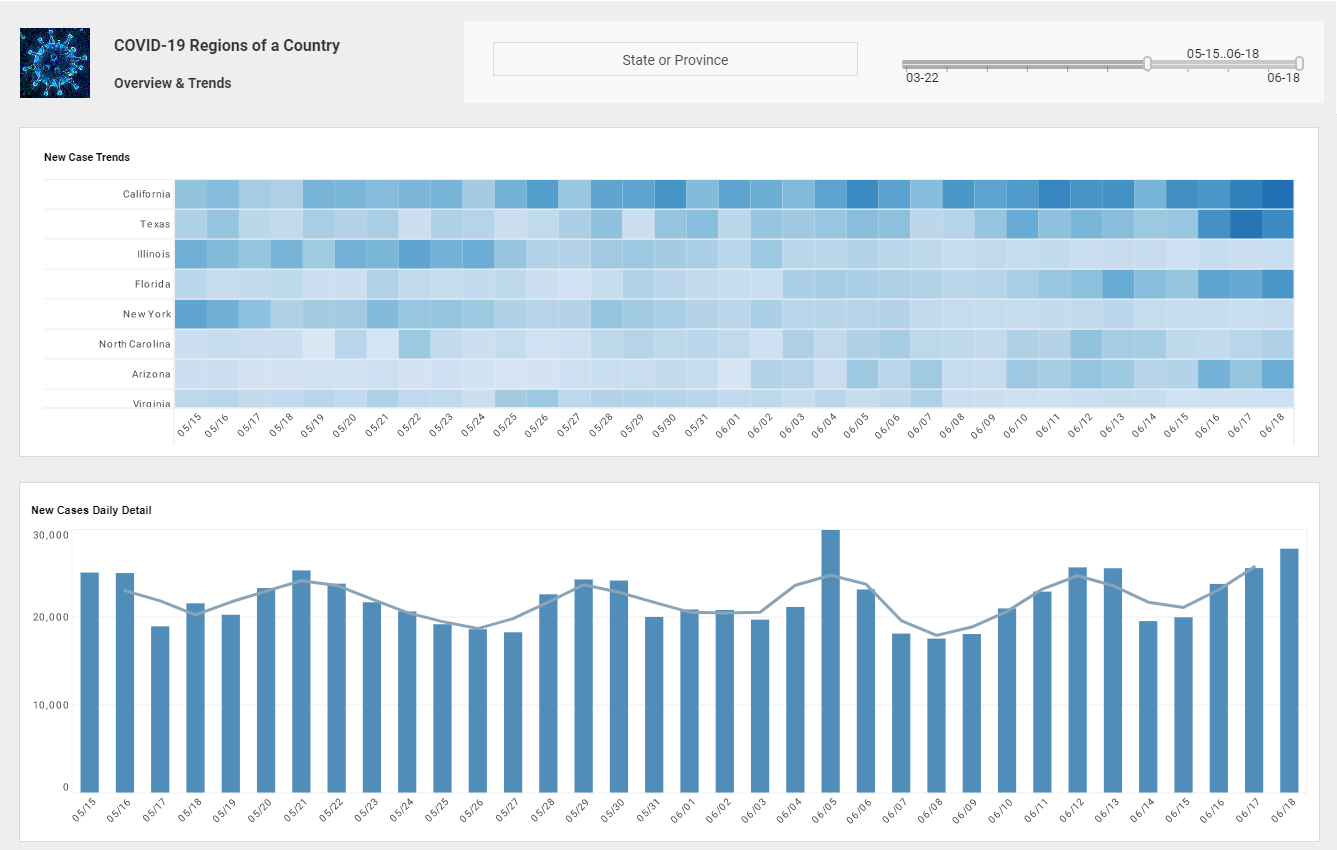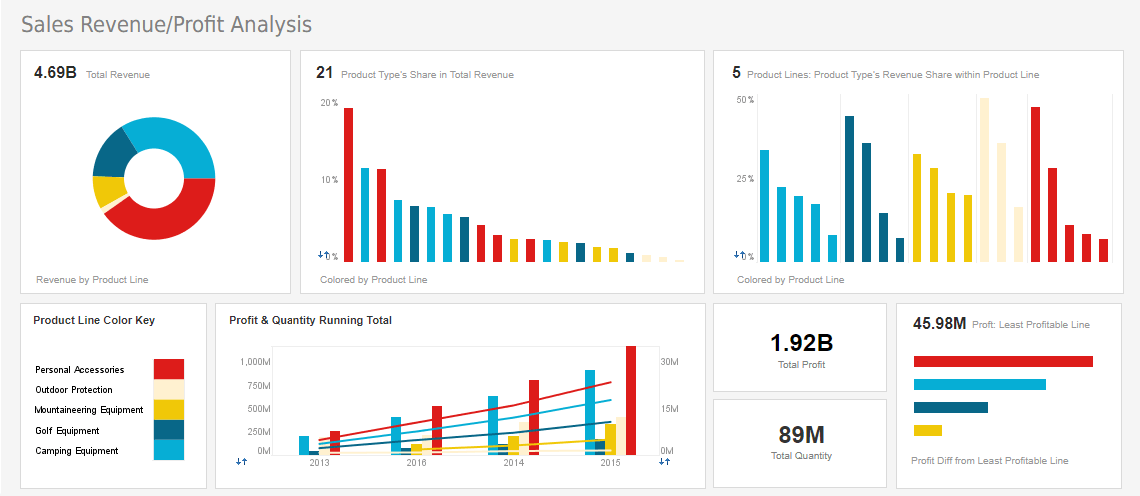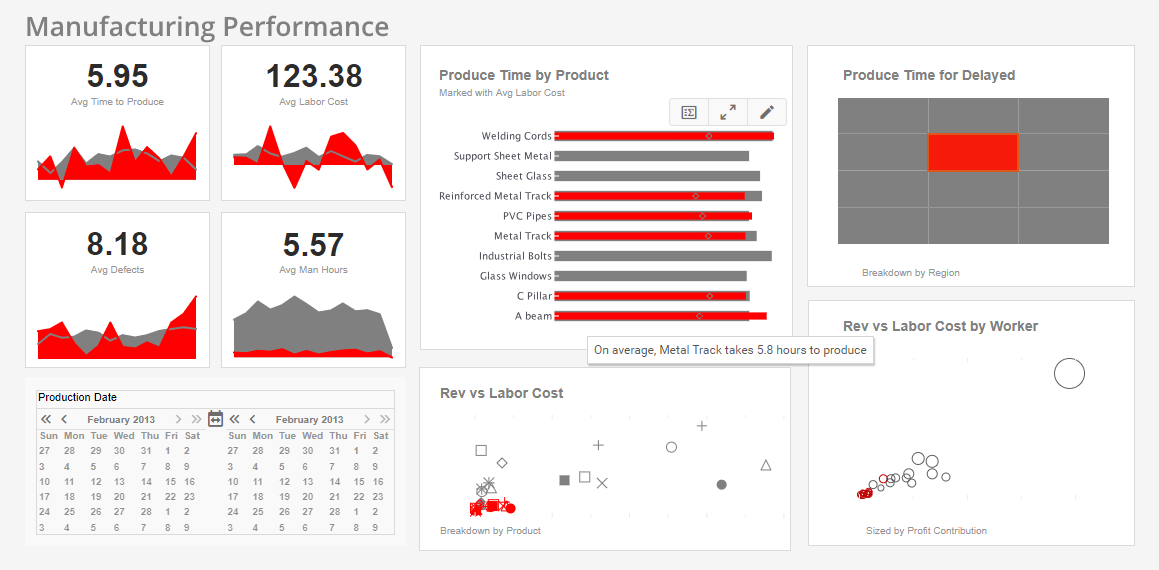BI Best Practices - from InetSoft Technology
Business intelligence software allows users to create reports and dashboards to monitor their business, as well as many more functions to aid operations. They combine executive information systems with IT functionality to provide a framework for your business.
If your organization utilizes business intelligence software properly, it can greatly aid overall performance. This is why you should keep certain BI best practices in mind when starting a BI venture. Software like this has only gotten better with time. Here are the BI best practices that every business should follow to be successful in a BI environment:
| #1 Ranking: Read how InetSoft was rated #1 for user adoption in G2's user survey-based index | Read More |
Find an experienced BI provider
A BI provider, such as InetSoft, is an organization that understands the value of business intelligence and will champion and promote the project across your organization. BI providers will also help you set budgets for your BI project.
Alignment between IT and Business
A critical factor for BI success is establishing an alignment between IT and business. To start, identify the intent and expectation of your BI initiative. These ambitions should be closely aligned with the business objectives and strategy.
Understanding the information needs across the organization as well as by the stakeholder groups is a crucial element of success. Ideally, this will include prioritization of needs both within and across stakeholder groups.
Outline Architecture and Standards
Define architecture for various facets of your particular BI infrastructure. Develop and maintain standards regarding design, definitions, processes, tools, and technologies required to implement BI.
Develop, Execute, and Appraise
Develop a plan, enact your plan, and measure actual process down the line against desired results. This will allow you to manage key decision points within your desired program timeline. Develop metrics that will measure both the implementation and ongoing success of BI.
InetSoft's StyleBI Business Solution
As you read above, you want to seek out an experienced BI providers. Having served over 5,000 customers since 1996, InetSoft has that experience. The StyleBI software offered by InetSoft will allow you to create both dashboards and reports on par with your needs. The software features a truly unique user interface that focuses on ease of use for non-IT employees, while still offering advanced programming and customization options for advanced users.
Drag and drop data to create dashboards and reports in literally minutes. Simple design mechanics will let users create highly customizable and dynamic dashboards, intuitive reports, and a new sense of control over your business's data today. Watch a quick intro video or visit the evaluate page to try it for yourself.
What Can Go Wrong If You Don't Follow Business Intelligence Best Practices?
Failing to adhere to business intelligence (BI) best practices can lead to a range of challenges and negative consequences for an organization. Here are several potential issues that may arise:
-
Inaccurate Decision-Making:
- Problem: Poor data quality, lack of data governance, or incorrect data interpretations can result in flawed insights.
- Consequence: Decision-makers may base critical decisions on inaccurate or incomplete information, leading to suboptimal outcomes.
- Data Security and Privacy Risks:
- Problem: Inadequate security measures may expose sensitive business data to unauthorized access or breaches.
- Consequence: Compromised data can lead to legal issues, damage to reputation, and loss of customer trust.
- Inefficient Resource Allocation:
- Problem: Without proper BI planning, organizations may invest in tools and technologies that do not align with business objectives.
- Consequence: Wasted resources, both in terms of time and money, with little or no improvement in decision-making capabilities.
- Lack of User Adoption:
- Problem: Ignoring the needs and preferences of end-users can result in poor adoption of BI solutions.
- Consequence: Valuable BI insights may go unused if the tools are not user-friendly, leading to missed opportunities for improvement.
- Silos and Fragmented Data:
- Problem: Lack of integration between different data sources and departments can lead to isolated pockets of information.
- Consequence: Decision-makers may miss the broader context, and organizational efficiency may suffer due to disjointed data.
- Absence of Data Governance:
- Problem: Neglecting data governance practices can result in inconsistent data definitions, poor data quality, and compliance issues.
- Consequence: Decision-makers may struggle to trust the data, and the organization may fail to meet regulatory requirements.
- Slow Performance and Scalability Issues:
- Problem: Inadequate infrastructure planning may lead to slow query performance and scalability challenges as data volumes grow.
- Consequence: Users experience delays in accessing and analyzing data, impacting the timeliness of decision-making.
- Failure to Align with Business Goals:
- Problem: Implementing BI solutions without a clear understanding of business objectives.
- Consequence: BI initiatives may not deliver value if they do not address the specific needs and goals of the organization.
- Resistance to Change:
- Problem: Lack of communication and training can lead to resistance among employees.
- Consequence: Users may resist adopting BI tools, hindering the organization's ability to leverage data for strategic advantage.
- Overlooking Data Visualization Best Practices:
- Problem: Poorly designed visualizations can mislead or confuse users.
- Consequence: Misinterpretation of data, leading to flawed decisions based on visualizations that are not clear or accurate.
More Articles for Researches of Best Practices
30 Fund Management Company KPIs - Asset Under Management (AUM), a key performance indicator (KPI), measures the total amount of money that a firm manages. Monitoring AUM growth gives the business information about how well it can draw in new customers and keep existing ones, as well as how well-liked its investment options are...
Get Rid of External Expensive Consultants - In terms of advantages, if you are doing two or three at a time at a 10 hospital system, the project is expected to take longer. But your internal team will learn how to do these things. This will present an opportunity to get rid of external expensive consultants. On the flip side, different hospitals might have different rules. Different rules involve a lot of coordination. People might have to travel down there and might not have signed up for that...
Project Progress and Timeline Metrics - Timeline compliance is one of the main issues in building projects. KPIs pertaining to project progress and schedules are often included in subcontractor software dashboards. Metrics that provide project managers a thorough picture of how well the project is doing include task completion rates, milestone accomplishments, and deadline adherence. With real-time monitoring, any delays may be quickly identified and prompt interventions can be made to maintain the project on schedule...
User Access Monitoring - The security of data is seriously threatened by unauthorized entry. KPIs pertaining to user access monitoring draw attention to anomalous or questionable behavior, such as repeated unsuccessful attempts at login, access from strange IP addresses, or access outside of regular business hours. Behavioral analysis is often used in this area of analytics to identify abnormalities in user behavior and highlight possible security risks...






